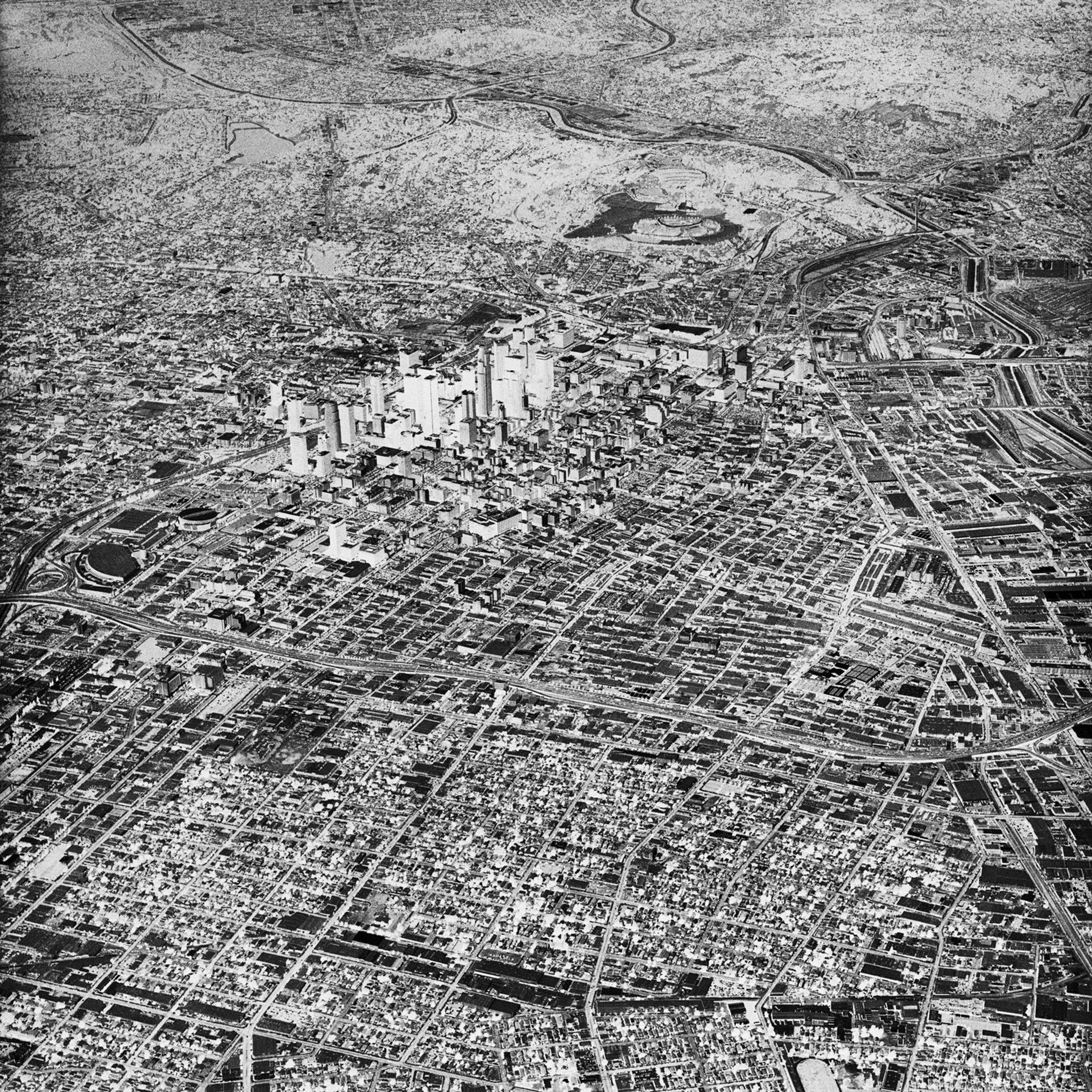Certain spatial fears seem endemic to the modern metropolis, and Los Angeles
defines this term in ways that no other American city can approximate.
This amorphous skein of strip malls, gated developments, highway entrances
and exit ramps, lays unfurled over the landscape like a sheet over a
cadaver. Surely the earth is dead beneath the sheer weight and breadth
of this built form?
In this
series from Los Angeles, I am using images that underscore the cyborg
nature of the city and its environs as a way to explore a kind of contemporary
oblivion, a series of sites that are both place and non-place. Themes
of development as a kind of self-generating, self-replicating force that
exists outside of nature are encoded in these images, which view Los Angeles
as both a specific site and as a more generalized condition. The inversion
of tonalities in these works is a simple act that defamiliarizes the images.
It also subtly refers to other ways of imaging- like the X-Ray, which
sees within the structure of an organism or body- or other modes of seeing
– like the flickering negative images in an atomic blast, when the
shadow world is revealed and released.
In its frenzy to expand, the city creates topographies of alienation,
fear, and despair. Indeed, Los Angeles is emblematic of an idea of modern
space that is linked to an increasing sense of collective societal anxiety.
The invention of radical concepts of urban space was a theme central to
the early twentieth century avant-garde, who called for modernity to escape
from the constraints of history. We now know, in ways once thought unimaginable,
that we cannot escape history. These aerial images describe a potentially
desecrated urban fabric, even as they transcribe the commonplace. Indeed,
in the post-9/11 age we now occupy, chaos and catastrophe seem implicit
in the urban aerial view. To surveil and record the city from the air
seems nearly to approach an act of civil disobedience. The images cannot
help but serve as portent or prophesy of some future conflagration.
Is this the reason for the unease, the hint of claustrophobia and synesthetic
terror that these pictures elicit? Or is it the endlessness of the expanse,
the multiplying nothingness that fills frame after frame, the city metastasizing
ceaselessly, which causes a sense of rising dread?
Our perceptions are contingent on the positions our bodies occupy in space.
The sculptor Gordon Matta-Clark split open the domestic structure of the
home, peeled it apart and let us occupy the void he created. For those
making their homes within the urban galaxy of Los Angeles, an entity with
neither limit nor center, is there any space remaining that can serve
as psychological refuge or sanctuary? From above, in these aerial views,
we see encrypted within the city’s code the elements of our own
vulnerability: an oblivion that is at once stately, magnificent, and potentially
lethal. How do the city’s inhabitants adapt to these aspects of
the modern metropolis? As Mike Davis writes in City of Quartz: Excavating
the Future in Los Angeles, “social anxiety…is just the maladjustment
to change. But who has anticipated, or adjusted to, the scale of change
in Southern California in the last fifteen years?”
The urban dweller of Southern California now exists in what Davis terms
the fastest growing metropolis in the western world, “with a built-up
surface area nearly the size of Ireland, and a GNP bigger than India’s.”
Left to navigate this terrain of anxiety and estrangement, with a pattern
of urbanization the critic Peter Plagens calls “the ecology of evil,”
the citizen of this alien landscape may begin to ponder some of the elemental
design questions of our time…Where is home? Where is our safe haven?
How can we move towards such a place? Perhaps by forming such questions,
we can begin to imagine the process of creating their answers. In the
interim, these images imply an incessant search for sanctuary that never
ends.
—David Maisel
Editor’s Note: You can see more photography by David Maisel in this earlier feature from LensCulture.

Feature
Oblivion
David Maisel creates highly detailed aerial photographs of the densely packed sprawl of Los Angeles. Is it any wonder that it looks alien and uninviting?
Feature
Oblivion
David Maisel creates highly detailed aerial photographs of the densely packed sprawl of Los Angeles. Is it any wonder that it looks alien and uninviting?
Oblivion
David Maisel creates highly detailed aerial photographs of the densely packed sprawl of Los Angeles. Is it any wonder that it looks alien and uninviting?















